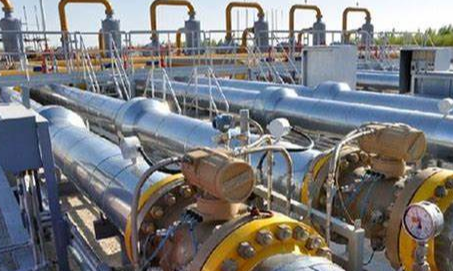Development and contribution of natural gas industry under China's carbon neutrality goal
2.2 Multi-scenario prediction based on fixed-base energy consumption elasticity coefficient method
According to China's economic development trend, and with reference to The State Council's "Action Plan for Carbon Peak before 2030" : Strictly and reasonably control the growth of coal consumption during the "14th Five-Year Plan" period, gradually reduce during the "15th Five-Year Plan" period, as well as the implementation of the ban on the sale of fuel vehicles by the Ministry of Industry and Information Technology, this paper predicts that coal and oil consumption will peak in 2030-2040, considering the service life of ordinary coal-fired power plants and fuel vehicles, coal and oil will still occupy a certain proportion of primary energy before 2060. But overall usage has shrunk dramatically. Gas-fired power generation will develop into the main peak power supply, so there is still a large room for natural gas consumption to rise. Based on this theory, this paper tries to establish the benchmark scenario, low-speed scenario and high-speed scenario corresponding to different economic growth rates. Through comparative analysis of the relationship between energy consumption and economic growth in China in recent years, based on quantitative prediction and research assumptions, the fixed-basis energy consumption elasticity coefficient method [15] is adopted to calculate the total medium and long-term primary energy consumption in China, and the natural gas consumption is forecasted and analyzed by setting the proportion of natural gas in the future primary energy consumption.
The elasticity coefficient of energy consumption is the ratio of the growth rate of energy consumption in a certain period to the growth rate of gross domestic product (GDP) in the same period, which usually reflects the relationship between energy consumption and national economic development. The traditional non-fixed-base energy consumption elasticity coefficient data is convenient to obtain and simple to calculate. As shown in Figure 2, the mismatch between China's energy consumption growth rate and economic growth rate is poor, resulting in large fluctuation of the non-fixed-base energy consumption elasticity coefficient and fuzzy law (Figure 3), which is not conducive to quantitative analysis.

The elasticity coefficient of fixed-base energy consumption in China is relatively stable on the whole (Figure 3), and has shown a slow rise since 1979. In 1998, the growth rate of China's GDP and energy consumption reached the lowest value in the same period (Figure 2), resulting in a significant decline in the elasticity coefficient of fixed-base energy consumption. However, with the rapid development of China's manufacturing industry, the growth rate of GDP and energy consumption has increased significantly, and the elasticity coefficient of energy consumption has gradually recovered. Compared with developed countries, China's energy consumption elasticity coefficient is significantly higher than that of developed countries in Europe and the United States in the same period due to its energy structure with a high proportion of coal, industrial structure dominated by heavy industry and manufacturing, and extensive economic growth mode with high energy consumption, as shown in Figure 3. In the past few decades, the economic growth rate of the major developed countries in Europe and the United States is generally higher than the growth rate of energy consumption, and some of them have negative growth in energy consumption, and the elasticity coefficient of fixed base energy consumption has decreased to a negative value. After 2006, the elasticity coefficient of China's fixed energy consumption showed a slow downward trend, and after the establishment of the "double carbon" goal, China's energy utilization efficiency will continue to improve, and the energy consumption per unit GDP will continue to decline, there is reason to believe that the coefficient will continue to maintain a steady decline. According to the trend extrapolation method, the forecast of the elasticity coefficient of fixed base energy consumption from 2021 to 2060 under the base scenario in this paper is shown in Figure 3, which predicts that the coefficient will decline to 0.18 in 2030 and 0.08 in 2060.
In addition, it has become a general consensus that the proportion of natural gas in the primary energy consumption structure will increase in the future, and the mainstream forecast is between 10% and 12% [16]. In this paper, the ratio of natural gas consumption to primary energy consumption is assumed to be 12%.
In the baseline scenario, countries emerge from the COVID-19 pandemic in a timely manner, trade recovery accelerates, and domestic and international cycles continue to generate momentum. It is expected that the average annual economic growth rate in the period from 2021 to 2060 will remain at about 3.5%, in which the average annual economic growth rate in the period from 2021 to 2030 will be 5.5% in the early period, and will be reduced to 2.83% in the period from 2031 to 2060 in the later period, but the economic quality will be higher and the green and low-carbon carbon will be more prominent. It is predicted that the total primary energy consumption in 2030 will increase from 49.80×108 t (tons of standard coal) in 2020 to 60.78×108 t, and then the growth rate will slow down and reach 62.23×108 t in 2060, as shown in Table 2. According to this calculation, natural gas consumption in 2030 and 2060 is about 6 006×108 m3 and 6 150×108 m3, respectively.
- EMERSON
- Honeywell
- CTI
- Rolls-Royce
- General Electric
- Woodward
- Yaskawa
- xYCOM
- Motorola
- Siemens
- Rockwell
- ABB
- B&R
- HIMA
- Construction site
- electricity
- Automobile market
- PLC
- DCS
- Motor drivers
- VSD
- Implications
- cement
- CO2
- CEM
- methane
- Artificial intelligence
- Titanic
- Solar energy
- Hydrogen fuel cell
- Hydrogen and fuel cells
- Hydrogen and oxygen fuel cells
- tyre
- Chemical fiber
- dynamo
- corpuscle
- Pulp and paper
- printing
- fossil
- FANUC
- Food and beverage
- Life science
- Sewage treatment
- Personal care
- electricity
- boats
- infrastructure
- Automobile industry
- metallurgy
- Nuclear power generation
- Geothermal power generation
- Water and wastewater
- Infrastructure construction
- Mine hazard
- steel
- papermaking
- Natural gas industry
- Infrastructure construction
- Power and energy
- Rubber and plastic
- Renewable energy
- pharmacy
- mining
- Plastic industry
- Schneider
- Kongsberg
- NI
- Wind energy
- International petroleum
- International new energy network
- gas
- WATLOW
- ProSoft
- SEW
- wind
- ADVANCED
- Reliance
- YOKOGAWA
- TRICONEX
- FOXBORO
- METSO
- MAN
- Advantest
- ADVANCED
- ALSTOM
- Control Wave
- AB
- AMAT
- STUDER
- KONGSBERG
- MOTOROLA
- DANAHER MOTION
- Bently
- Galil
- EATON
- MOLEX
- Triconex
- DEIF
- B&W
- ZYGO
- Aerotech
- DANFOSS
- KOLLMORGEN
- Beijer
- Endress+Hauser
- MOOG
- KB
- Moxa
- Rexroth


Email:wang@kongjiangauto.com


































































































